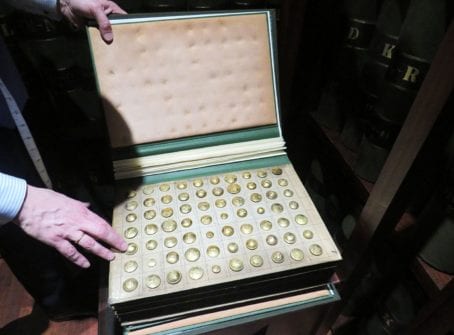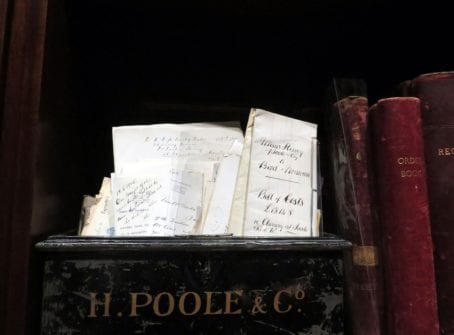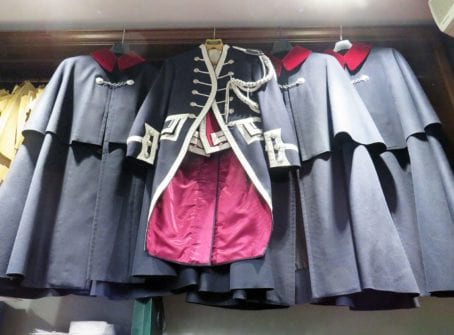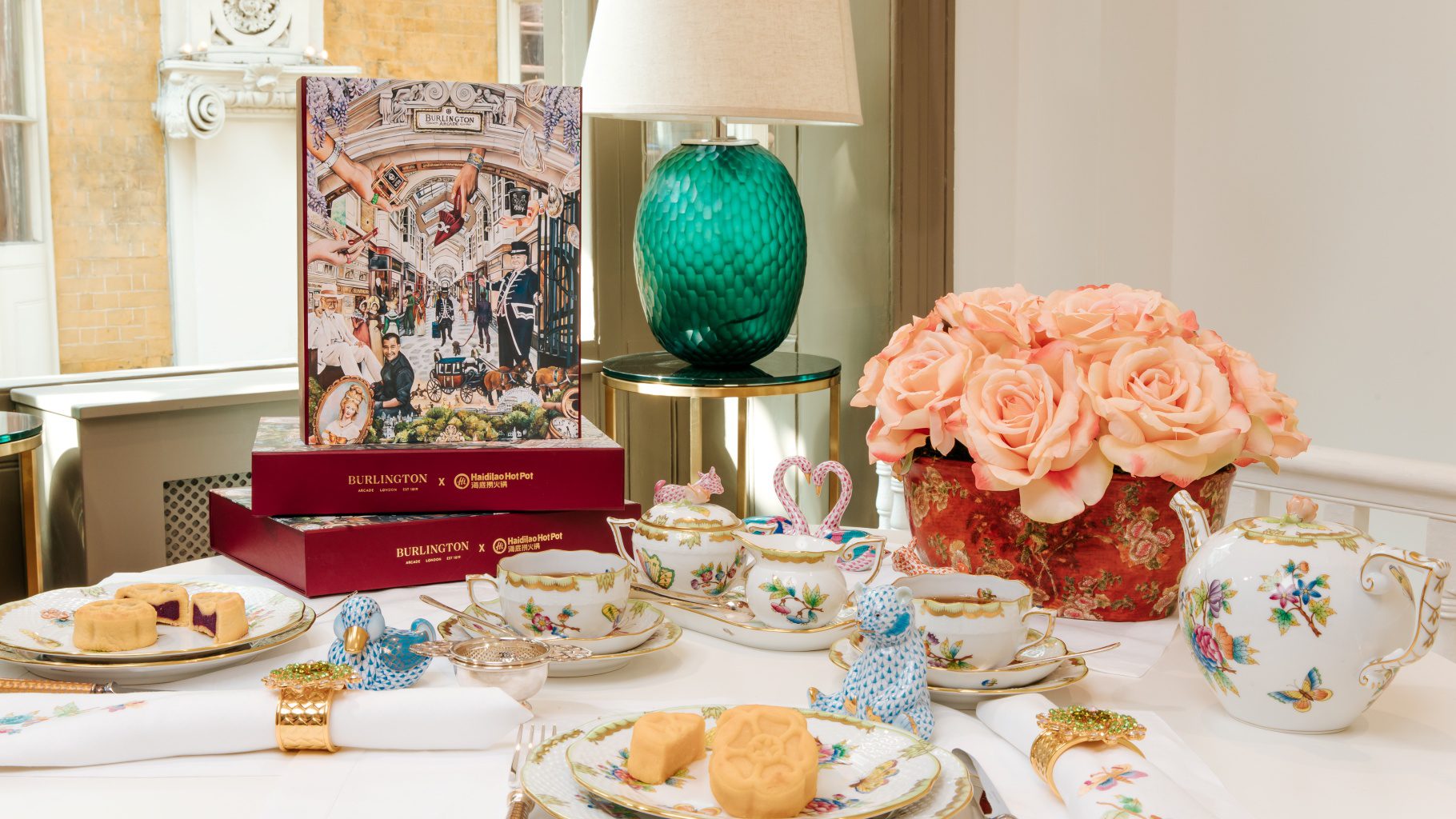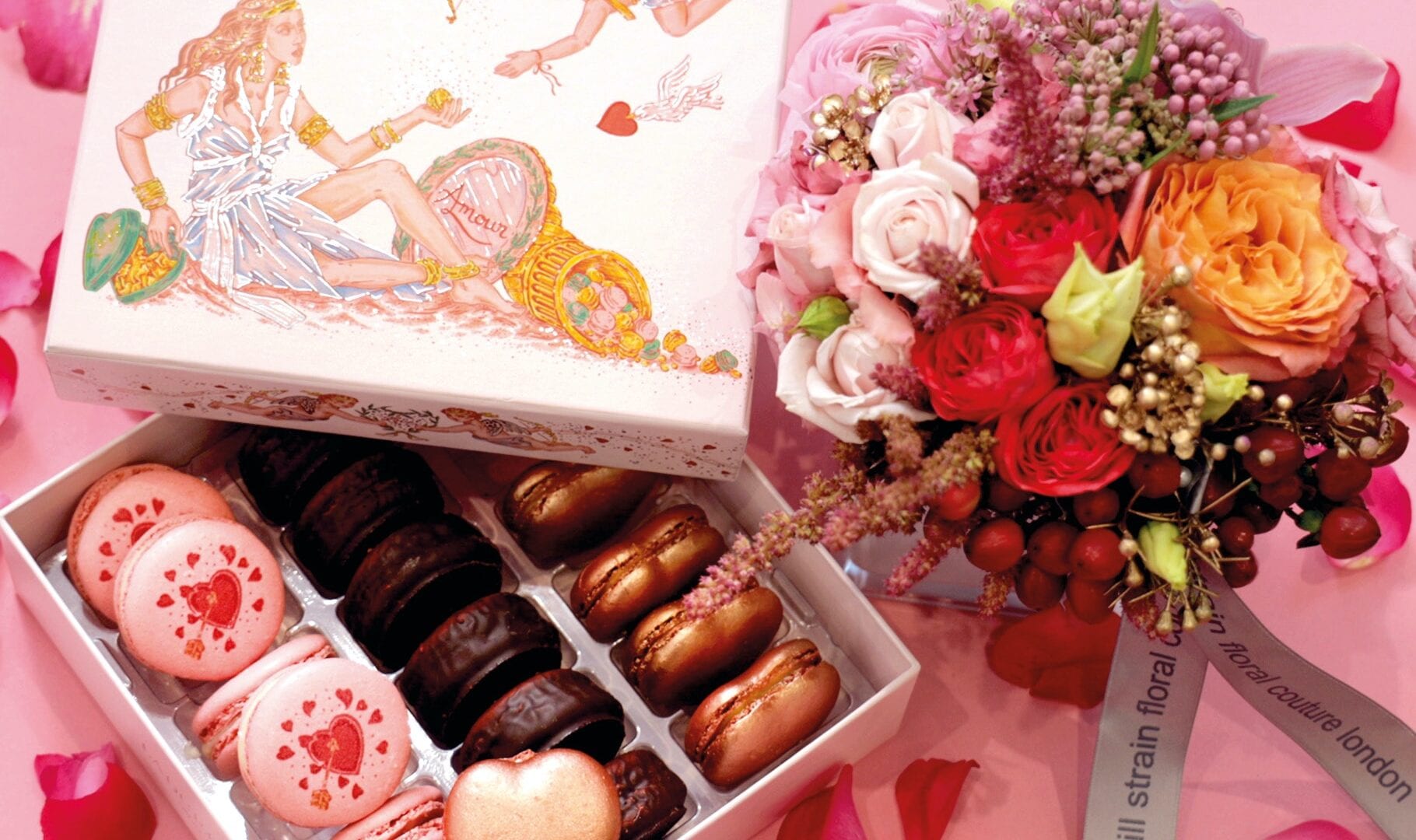Keith Levett, of Savile Row tailor Henry Poole & Co, talks us through his process.
By Tamara Abraham
When Keith Levett, director at Savile Row tailor Henry Poole & Co, was offered the opportunity to create a new livery for the Burlington Arcade’s Beadles, he jumped at the chance. “I’d worked around [the Arcade] for over 20 years at that point. It’s unique in London, there is nothing like it,” he remembers, as he stitches buttons onto one of the new navy capes. “I felt that it was one of the few environments in London, as unique as it was, that we could really put the Beadles into something which was formal, very traditional and it wouldn’t look stupid or out of place.”
The Beadles have guarded the Burlington Arcade since it first opened to the public in 1819. They were originally recruited from Lord Cavendish’s regiment, the 10th Royal Hussars, and are the oldest and smallest police force in the world. “I had initially intended to go for something Edwardian-looking. But the boys wanted something that was more Victorian,” Levett says of his early conversations with the current Beadles. “They wanted to go the whole nine yards and have what is really a Victorian take on a late 18th century servant’s livery.”

Henry Poole & Co, which made suits for Dickens, Churchill and Disraeli, has a rich history when it comes to livery. It was the first tailor on Savile Row, and fast became the outfitter not only to the British aristocracy, but to their households too. In the days before the motor car, one’s horse, carriage and equipment were a signifier of wealth and status, and lavishly-attired footmen formed part of that package. Often the servants’ ensembles were worth more than those of their masters.
As a result of this work, the house has an extensive archive, and Levett used it to examine livery styles, methodology, combinations and buttons. He chose navy blue as a base colour, with the 10th Royal Hussars’ traditional cherry red for the lining. “You couldn’t have a light coloured livery worn every day in central London, because it would look filthy in no time, and it would look frankly ridiculous,” he says. “We wanted to keep away from grey; black [would be] far too sombre – although the capes were initially black – and green is just too Christmassy with cherry red.”
The buttons are silver, 19th century in style, and bear the Burlington Arcade initials. The trim for the capes and hats, also silver, has an oak leaf trim. “Oak leaves appear a lot on military uniforms and the reason for that is that when King Charles I escaped the Roundheads after The Battle of Worcester in 1652, and hid in Penderel’s estate, [he] hid in an oak tree with one of his officers,” Levett explains. “The Roundheads galloped under the tree and had absolutely no idea that the King was just up in the branches – so it’s a signal of allegiance to the crown.”
Of course, the garments must be highly functional too, given that they are to be worn on a daily basis. Instead of starched collars and bow ties, the Beadles will wear more modern – and comfortable – soft collars and regular ties. “We have to be mindful of the fact that they are going to be out in fairly inclement weather a lot of the time, so the capes have to be both warm and serviceable,” says Levett. He gestures to the hem of the cape he’s working on: “This woven cloth [is] so tightly woven that it does not fray, [and] because you’ve got a raw edge, it hangs beautifully, it drapes and looks absolutely gorgeous. If we turned the hem under it would be very bulky, even if it’s pressed, and wouldn’t drop right.”
Every cape is made bespoke for each individual Beadle by Henry Poole & Co. “These are cut in a very 20th century way – the shoulder line is very 20th century, but the style of ornamentation sits sort of mid-19th century,” Levett says. “Those will be expected, even with very hard service wear and pollution, we’ll expect those to last 10 years.” The company makes the entire livery for the Senior Beadle, Mark Lord; the manufacture of rest of the team’s uniforms is executed by Samuel Brothers Ltd.
As the Burlington Arcade marks 200 years since it first opened to the public, it is fitting that the Beadles’ new liveries are reflective of the environment for which they were designed: Luxurious, steeped in heritage, yet relevant in 2019. They are, Levett says, anything but pastiche. “If you went back a hundred years, people would not look at them and think they were a shabby imitation.”
